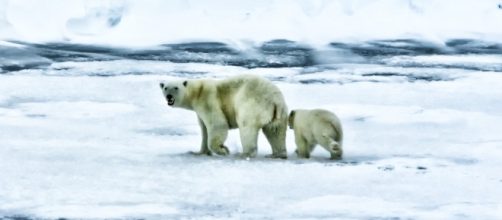New satellite data shows temperatures are plunging downwards, despite NOAA and NASA using heavily jiggered data to show a global warming trend this century. Maintained by the RSS group from the University of Alabama/Huntsville and partially funded by NASA, it shows temperatures are heading toward pre-El Nino temperatures.
The previous El Nino began in 2015 and ended in 2016 and elevated worldwide temperatures for about 15 months. The satellite temperature record is important because it’s not affected by land and sea biases, such as concrete, the Urban Heat Island effect, missing data stations, and hotter cityscapes.
NOAA, however, uses land- and sea-based temperature stations that are prone to ‘overheating,’ have fewer rural temperature stations, and in many countries, have no data recording locations. NOAA’s dataset has been subjected to adjustments that have permeated other datasets across the world adopting the new data, with many unaware they tampered with the data. NASA called the satellite temperature record the “gold standard” until it started showing a global warming pause that began in 1998, after another strong El Nino.
'LARGE FALL' IN TEMPS: SATELLITE DATA REINSTATES GLOBAL TEMPERATURE 'PAUSE' https://t.co/201tGe9v8A via @ClimateDepot
— Marc Morano (@ClimateDepot) November 21, 2016
More data tampering exposed
Based on analysis done by Tony Heller at “Real Climate Science,” the data that NOAA uses (and shares with NASA) is deviating from satellite temperatures at about 1.3 degrees per century.
And further analysis done by Paul Homewood at “Not A Lot Of People Know That” shows how NASA has adjusted every temperature record in their database to show a false warming trend in Iceland and Greenland. That’s contrary to observed record ice growth in Greenland.
Icelandic Met Office Sells Out to NASA's Gavin Schmidt https://t.co/m3tgF9Gy6X via @wordpressdotcom pic.twitter.com/wRrJ6BZIQi
— SvdMeer (@StewieVdM) November 22, 2016
The Arctic warm blob
Last week the Arctic was 36 degrees F warmer than average and the news media quickly blamed a short-lived one-day event on climate change. The problem, Homewood said, is that it’s not unusual. The Danish Meteorological Institute (DMI) has records going back to 1954 for the Arctic and they show similar spikes in temperatures for 1972, 1974, and 1976 (during the great cooling scare).
And those spikes occurred in January and February, not November.
Paul Homewood:The Washington Post & The “Super Hot” Arctic #COP21 #climate #globalwarming #ClimateChange https://t.co/0PPItqpm5S
— Plants ♥ CO2 (@PlantsLoveCO2) November 20, 2016
Homewood points out the Arctic air can get hotter for a short time period when warm, moist air turns to water, gives off heat, and overheats the atmosphere. Since Arctic records aren't very robust, we don't have a lot of historical data to sift through; despite this, when the Arctic warm ‘blob' appeared last week, another cold blob appeared over Siberia and North America. As Homewood rightly points out, this has happened before and will happen again. It's called weather.
According to David Whitehouse of the think-tank Global Warming Policy Foundation, sea temperatures show a smaller decline though this is considered normal given the ocean’s “thermal lag.” Taking into account the 15 months of higher-than-normal temperatures caused by a strong, naturally occurring El Nino, the longer-term satellite record actually shows an ongoing pause.

